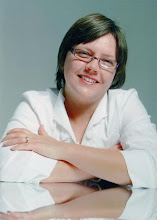
Day 10
Santa Fe, New Mexico
The last day of my experience at The Ryder Studio…an awesome time of learning. I was saddened to see it come to an end. I am looking forward to returning again in the near future!
We learned about drawing hair on the 10th day. The hair is sometimes darker than skin tone and sometimes lighter.
Hair is just another form.
The border of the hair on the head is very important to get.
Don’t draw the block-in as a generic form. Draw it as an appearance of what the person looks like.
Look for the hair shape during the block-in.
Continue the scalp with an imaginary line through the hair to help create the form shape.
To some degree, the hair clings to the head, like a cap.
Hair naturally groups into locks.
When things overlap, use a T-intersection. Same goes for the hair.
We all know what it feels like to put your hair behind the ear. Make that feeling happen.
The locks of hair are sort of glued together, in a sense.
After the shape block-in of the hair, then add the placement of the locks, each with a certain convexity.
For short hair or hair challenged people, draw forests of hair with meadows in-between. Crew cuts, etc.
Hair is glossy and shiny – as it arks up and turns, it reflects a highlight. As it turns back down it starts to darken again.
The highlight cuts across the shape of hair in a different way than it does on the face.
Shapes of shading are shaped like tornadoes.
After the block-in and shape placements, then add tonal washes.
The highlights in the hair follow the shape of the light on the forehead.
The terminator of the jaw-line follows into the hair.
When hair falls into the shadow, you have a less-see zone.
Remember not to over-define areas in the shadows, draw only what you see as accurately as you can.
Hair casts shadows on the face.
As hair is not solid, the cast shadows are not solid. They sometimes are fuzzy. ie: dappled sunlight on the sidewalk from a tree at sunset.
Draw hair in a scruffy fashion instead of smooth and silky. If you are having a bad drawing day, draw some hair.
Hair falls vertically at a faster rate than hair falls horizontally.
Hair has a certain spring to it.
When the curl sits on a shape it curves differently.
Leave the highlights the white of the paper.
Think of mixing eggs for scrambling when applying the pencil to the paper.
Value is an aspect of color. You can give a sense of color about how dark the values become.
When class was finished for the day, this is what I came up with. I drew “Souzy” for 4 afternoons. She isn’t complete at this stage, but she has a good start.






